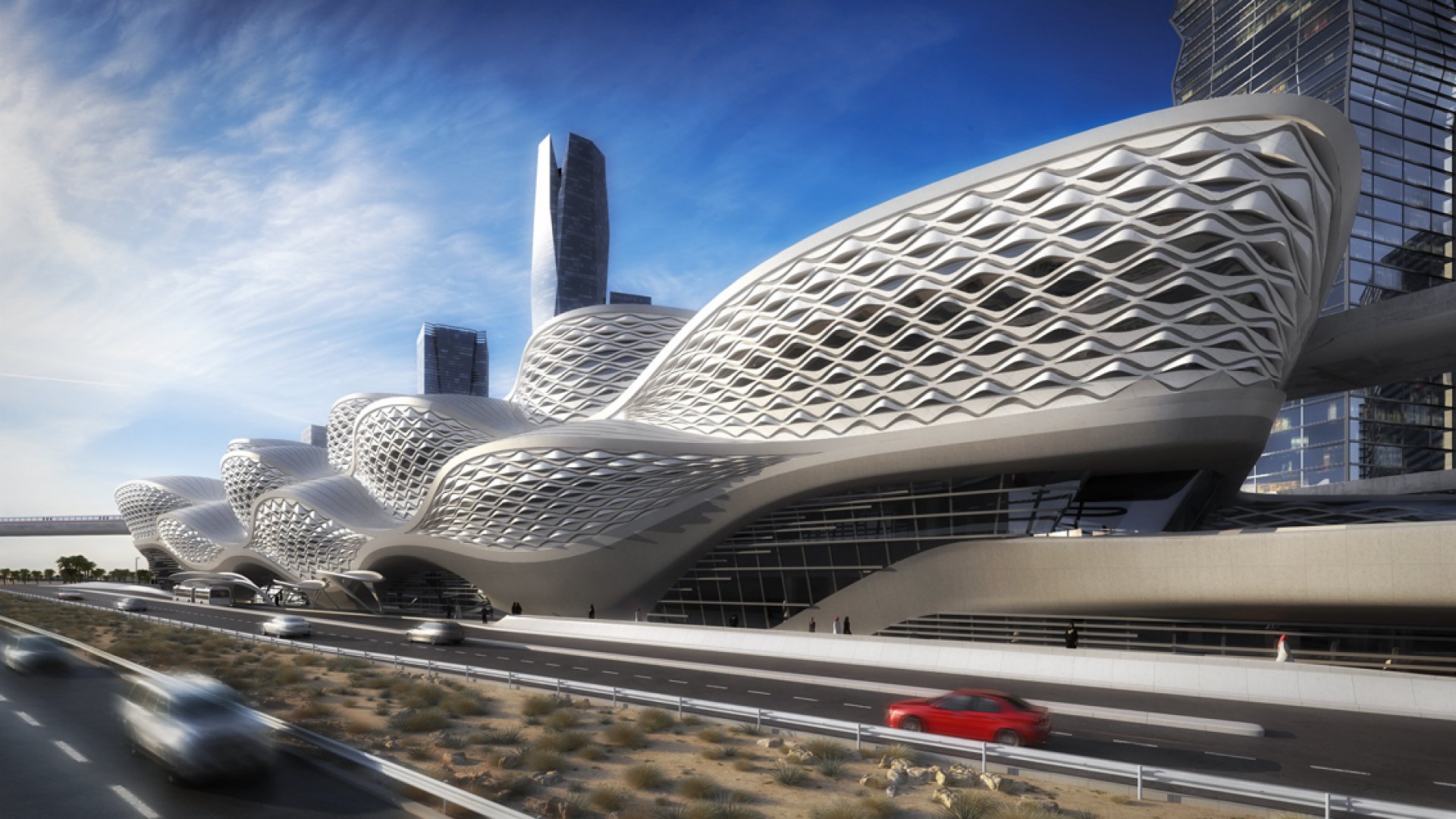For several American cities, the infrastructure for their public transit systems have been in place for more than a century. It’s almost like Chicago, New York City, and Boston laid down train tracks the day after they were founded.
Riyadh, the capital of Saudi Arabia and the home to 6 million people, is building its first light rail system from scratch.
Tech Insider reports that the city is building six metro lines that connect 85 stations over nearly 110 miles of track. Also, a new bus system will be implemented.
For $10 billion, the Saudi government hired the U.S. construction and civil engineering firm Bechtel to lead the project. Bechtel assembled a group of contractor firms, and they are using 1,000-ton boring machines to hollow out train tunnels underneath the city for nearly 40 miles of track for 39 stations.
A few major architects have even designed train stations. Zaha Hadid Architects, for instance, designed the King Abdullah Financial District Metro Station, which will connect Lines 1, 4, and 6. The building will have a wavy lattice exterior and will contain four public levels and two underground levels of parking.
The trains themselves will be nicer than any American rapid transit vehicle. The trains will be automatic, driverless, fully air conditioned, and Wi-Fi accessible. They can run up to 90 mph. Around 20% of the system’s power will come from solar energy.
The new transit system is expected to be ready by the end of 2018. Public transit will come just in time for the growing city, as estimates say that Riyadh’s population could reach 9 million by 2035.
 Exterior of the King Abdullah Financial District Metro Station. Rendering courtesy Zaha Hadid Architects. Click to enlarge.
Exterior of the King Abdullah Financial District Metro Station. Rendering courtesy Zaha Hadid Architects. Click to enlarge.
Related Stories
| May 13, 2014
19 industry groups team to promote resilient planning and building materials
The industry associations, with more than 700,000 members generating almost $1 trillion in GDP, have issued a joint statement on resilience, pushing design and building solutions for disaster mitigation.
| May 11, 2014
Final call for entries: 2014 Giants 300 survey
BD+C's 2014 Giants 300 survey forms are due Wednesday, May 21. Survey results will be published in our July 2014 issue. The annual Giants 300 Report ranks the top AEC firms in commercial construction, by revenue.
| May 1, 2014
Super BIM: 7 award-winning BIM/VDC-driven projects
Thom Mayne's Perot Museum of Nature and Science and Anaheim's new intermodal center are among the 2014 AIA TAP BIM Award winners.
| Apr 29, 2014
USGBC launches real-time green building data dashboard
The online data visualization resource highlights green building data for each state and Washington, D.C.
Smart Buildings | Apr 28, 2014
Cities Alive: Arup report examines latest trends in urban green spaces
From vertical farming to glowing trees (yes, glowing trees), Arup engineers imagine the future of green infrastructure in cities across the world.
| Apr 9, 2014
Steel decks: 11 tips for their proper use | BD+C
Building Teams have been using steel decks with proven success for 75 years. Building Design+Construction consulted with technical experts from the Steel Deck Institute and the deck manufacturing industry for their advice on how best to use steel decking.
| Apr 2, 2014
8 tips for avoiding thermal bridges in window applications
Aligning thermal breaks and applying air barriers are among the top design and installation tricks recommended by building enclosure experts.
| Mar 26, 2014
Free transit for everyone! Then again, maybe not
An interesting experiment is taking place in Tallinn, the capital of Estonia, where, for the last year or so, its 430,000 residents have been able to ride the city’s transit lines practically for free. City officials hope to pump up ridership by 20%, cut carbon emissions, and give low-income Tallinnites greater access to job opportunities. But is it working?
| Mar 26, 2014
Callison launches sustainable design tool with 84 proven strategies
Hybrid ventilation, nighttime cooling, and fuel cell technology are among the dozens of sustainable design techniques profiled by Callison on its new website, Matrix.Callison.com.
| Mar 20, 2014
Common EIFS failures, and how to prevent them
Poor workmanship, impact damage, building movement, and incompatible or unsound substrate are among the major culprits of EIFS problems.

















